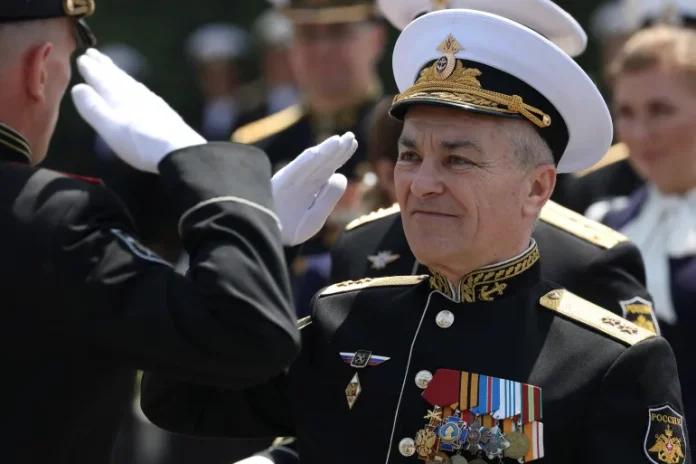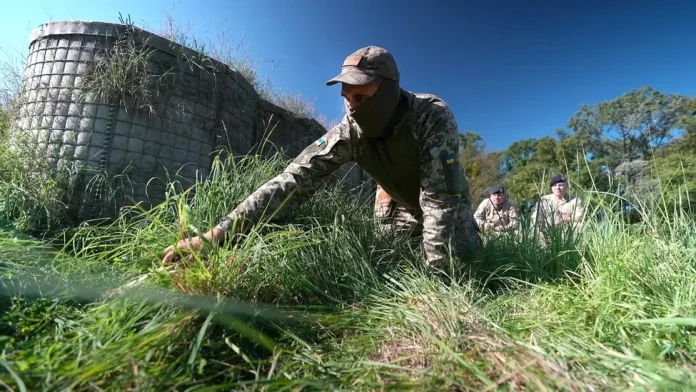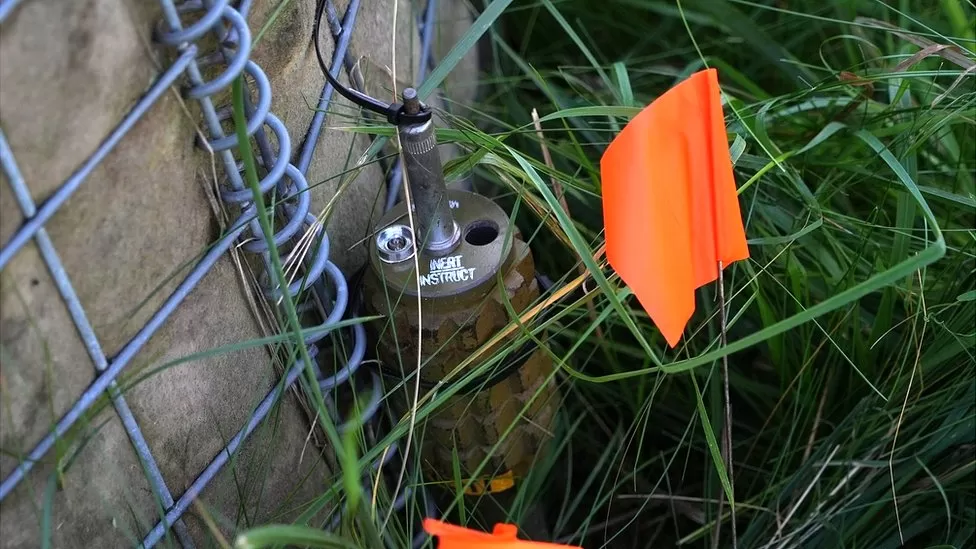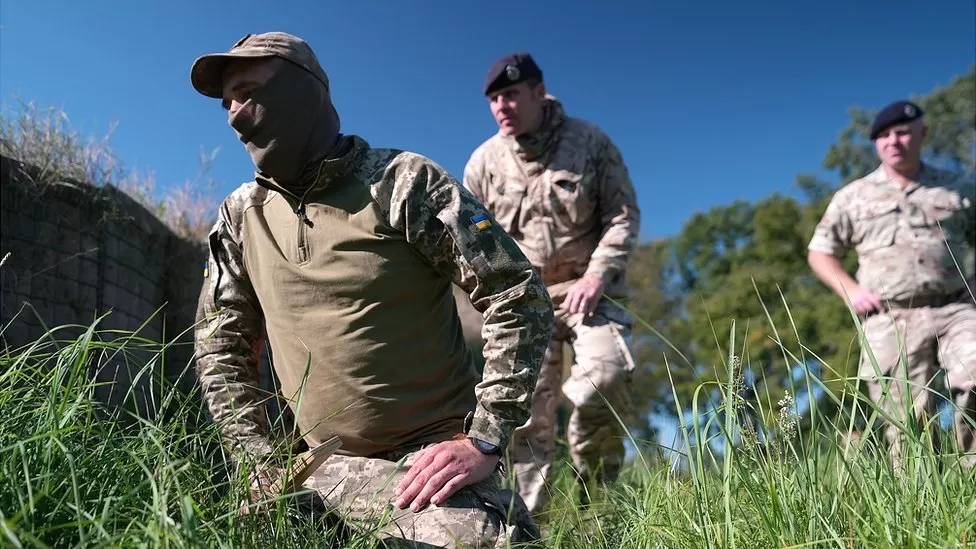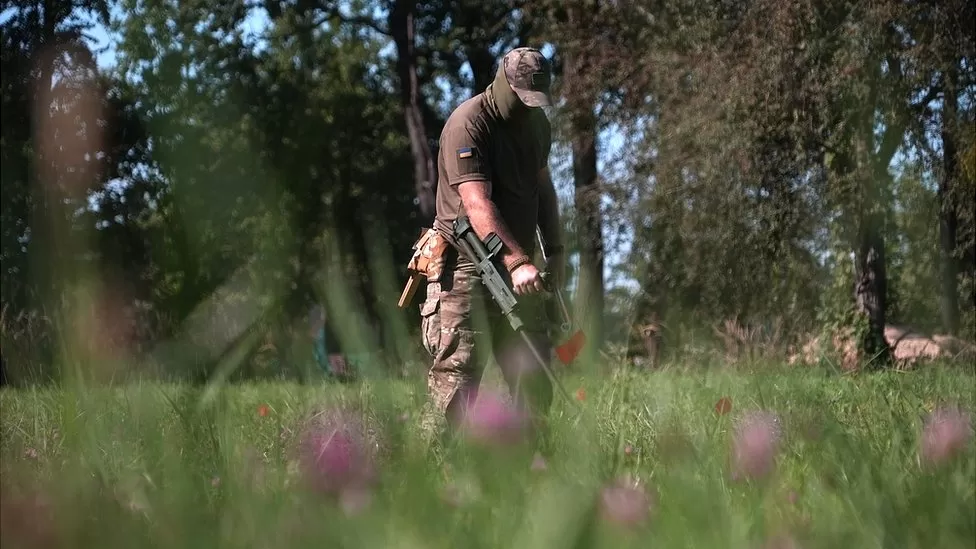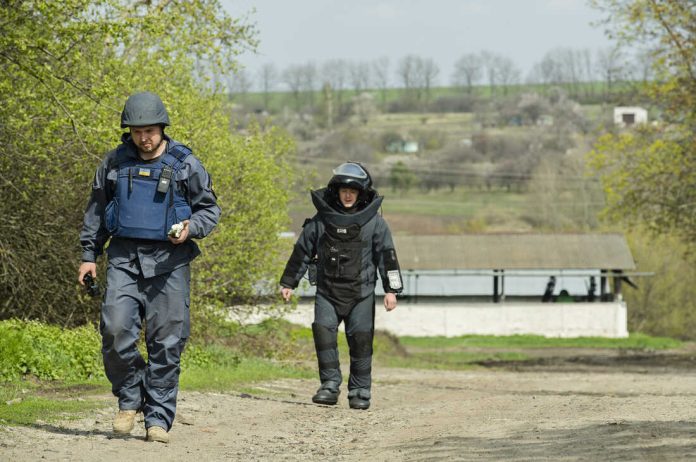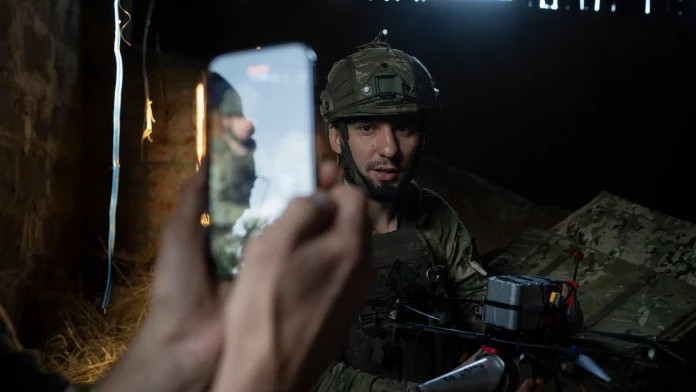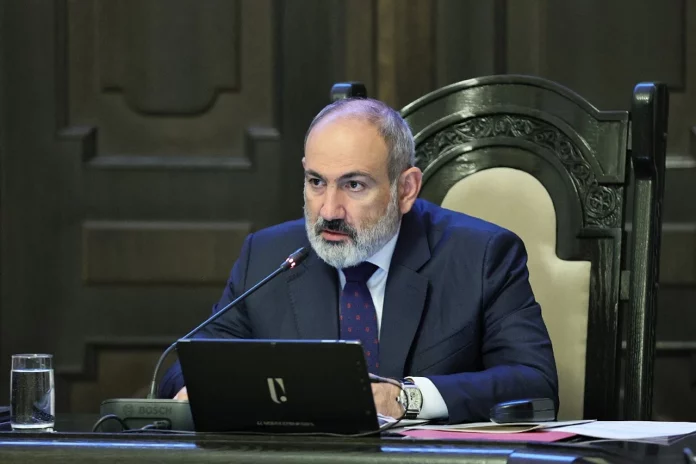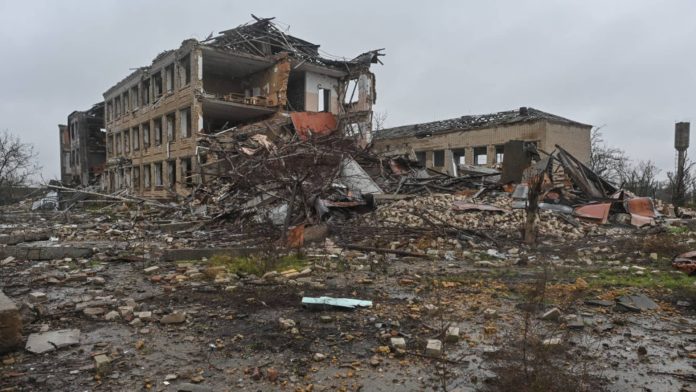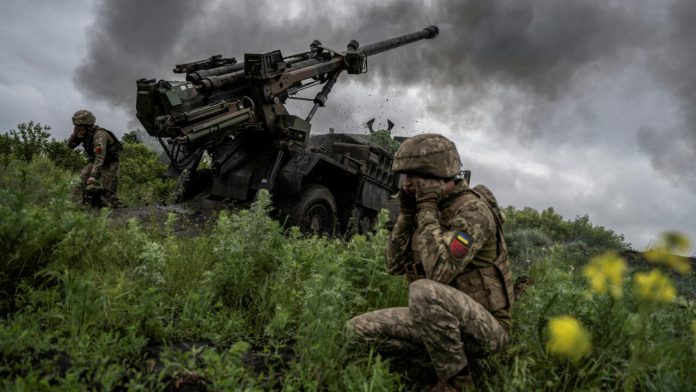Hovering above hostile territory, a Ukrainian reconnaissance drone transmits a crystal-clear image to soldiers concealed in a basement several kilometers away. In this image, a Russian armored vehicle leisurely traverses a vital logistics route, seemingly vulnerable amidst the war-torn green landscape, marked by artillery scars.
In an instant, the image vanishes, replaced by a chaotic display of black and white pixels on the drone operator’s screen. A composed commander, known by the battlefield alias Giocondo, permitted The Associated Press to accompany him and his unit of drone operators, but only under conditions of anonymity to safeguard their identities. In the realm of high-tech warfare, the Russians employ electronic beams to disrupt the drone’s signals.
Moments later, the drone operator switches to a frequency less susceptible to Russian interference. The aerial view of the armored vehicle reemerges, and a second drone, loaded with explosives, swiftly takes flight, hurtling toward its target.
Nineteen months into the Russian invasion, amidst an arduous counteroffensive, the Ukrainian government plans to invest over $1 billion to enhance its anti-drone capabilities. Drones, whether for reconnaissance, precision bombing, or self-destructive missions, not only conserve resources but also safeguard the lives of soldiers. They offer greater precision than conventional artillery, which is in short supply, and possess the capacity for impactful actions such as real-time battlefield mapping, neutralizing tanks and ships, and halting Russian advances.
Nevertheless, the advantages of drones can be fleeting. The Russian military, drawing on Iranian expertise for its own formidable fleet of lethal drones, swiftly adapts each time Giocondo’s unit gains an advantage. Giocondo emphasizes that triumph relies on continual adaptation and innovation on the battlefield.
Mykhailo Federov, Ukraine’s Minister for Digital Transformation, asserts that the government is committed to building a cutting-edge “drone army,” with tangible contributions to the war effort expected by year’s end. The nation has already trained over 10,000 new drone pilots this year.
Federov confidently declares, “A new phase of the war will soon commence.”
PERFECT TARGET
Giocondo’s unit operates near the occupied town of Svatove, located in northeastern Ukraine. Over several months, they have diligently adapted drones to enhance their capabilities, enabling them to venture deeper into enemy territory while evading Russian detection and countermeasures.
These dedicated drone pilots are all volunteers, with many lacking any prior military experience before Russia’s invasion.
In a barn bathed in the morning’s gentle glow, a pilot known by the battlefield alias Bakeneko dons a head-mounted display, instantly immersing himself in a flight above lush fields teeming with Russian military vehicles and troops. He aims to guide an explosive-laden drone towards a Soviet-made tank recently pinpointed by a reconnaissance drone.
As he operates, Bakeneko listens to the sounds of the German heavy metal band Powerful in one ear, explaining that he “can’t fly in silence.”
Also Read: Armenia’s PM Indicates Shift in Foreign Policy Away from Russia
Near, another soldier, formerly a sales manager in civilian life, readies explosive devices. He secures artillery shells and large batteries using plastic flex cuffs and duct tape, transforming an ordinary commercial drone into a lethal weapon.
Throughout the day, Russian forces to the east hold the advantage of favorable lighting conditions, using their own drones to surveil Ukrainian positions. However, this advantage shifts in the afternoon when Ukrainian drone operators can sometimes discern the moving shadows of Russian infantrymen.
The process of scouring the expansive landscape to locate a target is time-consuming. Russian troops have become adept at concealing themselves amidst the vegetation.
When Bakeneko’s target comes into view, he suddenly commands the remote control, causing the drone to descend rapidly. He witnesses the idyllic countryside closing in through his headset, and then his screen goes blank.
“Excellent, we hit it,” exclaims Giocondo, who watches on a separate screen, revealing a plume of smoke emanating from the tank.
TRIAL AND ERROR
The escalating reliance on short-range explosive drones on the front lines has compelled Ukrainian officials to claim that the Russians are deploying more handheld jamming devices. This development has necessitated Giocondo’s unit and others to devise inventive countermeasures.
After a three-month painstaking process of trial and error, Ukrainian troops stationed in the eastern village of Andriivka, located south of Bakhmut, eventually cracked the code on evading Russian jamming devices that had long hindered their drones. This breakthrough led to the recapture of the village in early September. A spokesperson for the battalion responsible for retaking the village highlighted the pivotal role played by explosive drones, as they compelled the Russians to withdraw heavy weaponry approximately 15 kilometers to remain beyond the drones’ reach.
However, Ukrainian drone pilots know that the Russians will learn from these experiences and adapt again.
“This is an interactive, two-sided competition,” remarks Stephen Biddle, a senior fellow for defense policy at the Council on Foreign Relations.
Since the early stages of the conflict, Russia has employed long-range military-grade drones to inflict devastating damage and instill psychological terror in Ukraine’s capital, Kyiv, and other cities. In response, the Ukrainian military has launched its own military-grade drones, infiltrating deep behind enemy lines to target warships in the Black Sea, an airport in Western Russia, and even buildings in Moscow, as Russian officials and media claimed.
The intensification of short-range drone warfare, as witnessed in units like Giocondo’s, is a direct response to the challenges Ukrainian forces encountered during the summer while attempting to breach Russia’s fortified defenses. The counteroffensive initiated in June has depleted financial resources, artillery, and personnel, failing to yield the anticipated momentum for Ukraine.
Facing these hurdles, the leader of an elite drone unit, the Asgard Group, which oversees Giocondo’s team, identified an opportunity. This leader, a wealthy former businessman operating under the battlefield moniker “Pharmacist,” directed his soldiers to target Russia’s extensive and costly weaponry using small, cost-effective drones.
Pharmacist’s reasoning was straightforward: Explosive drones could be manufactured for roughly $400, whereas a conventional projectile might cost nearly ten times as much. Even when multiple drones were needed to eliminate a single tank, it remained a cost-effective approach. Additionally, this strategy minimized the risk to soldiers’ lives.
However, modifying commercial drones with the necessary hardware and software for battlefield use was a prerequisite. They needed to penetrate deeper behind enemy lines without detection or jamming. A breakthrough occurred by employing multiple drones in coordinated efforts.
With an entrepreneurial spirit, Pharmacists transformed a diverse group of engineers, corporate managers, and filmmakers into an elite fighting force. He estimates that his 12-member team, assembled with just $700,000, has destroyed enemy equipment worth $80 million.
The Russian military, grappling with its own economic and military challenges as the war in Ukraine endures, is also seeking to accelerate its use of drones. While Russia had increased production before its full-scale invasion of Ukraine in early 2021, officials have conceded that they fell short. As Ukraine catches up, reports suggest that Russian shopping centers are being repurposed into research laboratories and drone factories, according to the Institute for the Study of War, a U.S.-based think tank.
As the Pharmacist aptly notes, “The enemy learns very quickly.”
SCALING UP
The Ukrainian government has recognized the grassroots innovation demonstrated by individuals like Giocondo and Pharmacist and is now eager to replicate these efforts with substantial funding.
The proposed budget for 2024 allocates an additional 48 billion hryvnias for defense spending, earmarked explicitly for acquiring drones.
According to experts, one compelling reason to prioritize the enhancement of Ukraine’s domestic drone manufacturing capabilities is the increasing challenge of sourcing components from China, the world’s foremost drone producer.
“We are taking every measure to encourage businesses to invest in the production of various drones,” stated Federov, Ukraine’s Minister of Digital Transformation. He anticipates domestic drone production will surge to a hundred times greater than last year’s. Since March, at least eight new Ukrainian companies specializing in explosive drones have emerged as part of this initiative.
Federov also pointed out that advances in artificial intelligence, which some brigades are incorporating, are likely to further enhance the effectiveness and cost-efficiency of drones in the future.
Nevertheless, certain drone operators approach this enthusiasm with a degree of caution. They harbor doubts about Ukraine’s military culture, which still retains some vestiges of Soviet-era rigidity, adapting quickly enough.
They emphasize that the success of a drone operation isn’t solely contingent on training and procuring drones. The more critical component of the equation lies in scaling up the ingenuity and real-time adaptability demonstrated by units like Giocondo’s.
“It’s a complex interaction within the unit itself,” remarked Pharmacist.
—
Susie Blann, an Associated Press journalist, contributed from Druzhkivka.


